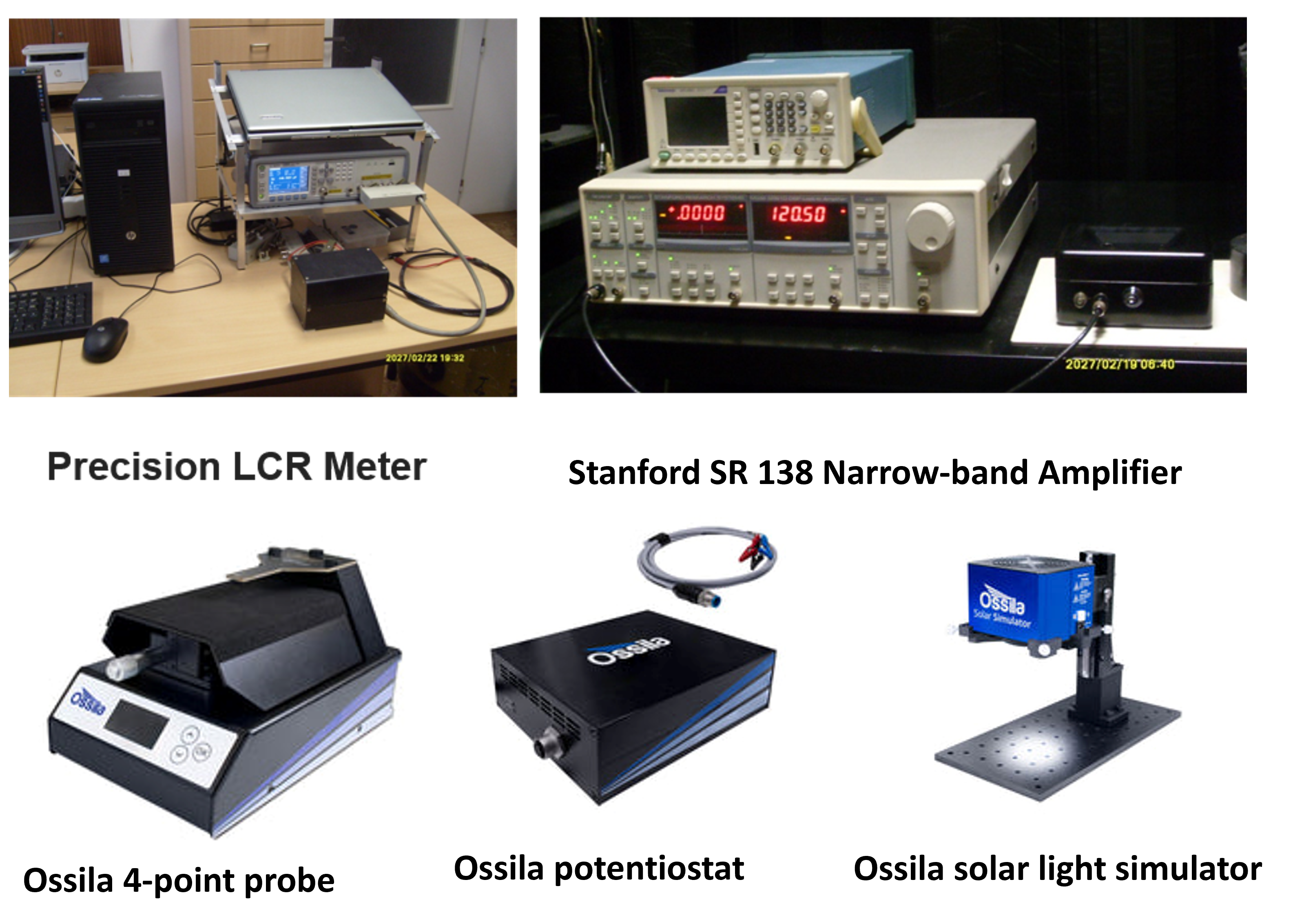Electrical and optoelectrical properties
Our department has a wide range of instruments and equipment available for studying the electrical and optoelectronic properties of materials.
-
Resistivity determination using the van der Pauw method in the range of approximately 10-4 to 109 Wcm (various setups based on Keithley current sources, voltmeters, and scanners).
-
Resistivity determination using the van der Pauw method on non-compressible powdered materials, dependent on pressure (up to pressure values of approximately 12 MPa).
- Ossila 4-probe measuring system for resistivity measurements in the range 100 mΩ/sq – 10 MΩ/sq.
-
Study of the temperature dependence of resistivity in the range of approximately 5 to 320 K (closed-cycle helium cryostat OmniPlex® GMX19 with Model DE-204SL DE-210SF expander and ARS-10HW helium compressor, Advanced Research Systems, Inc.), where the sample is in a helium atmosphere, which allows for better heat exchange.
-
Determination of material resistivity changes in-situ in a Binder temperature chamber (temperature range -40 °C to +180 °C.
-
Determination of material density using the Archimedes method (using decane on a Mettler Toledo XS205 DualRange balance).
-
Study of alternating current (AC) parameters of materials using precise LCR meters HP4284A and HP4285A in the frequency range 20 Hz to 5 MHz, or using a precise Agilent LCR meter covering the range 20 Hz to 2 MHz.
-
Stanford SR 138 Narrow-band Amplifier, which enables the study of the frequency dependence of the amplitude of electrical current oscillations passing through the sample, and thus the product of carrier mobility and lifetime, i.e., a parameter important for the function of radiation detectors and solar cells.
- Ossila solar light simulator.
-
Automatic measurement of impedance spectra with the Agilent E 4980A spectrometer in the range 20 Hz – 2 MHz for determining the mobility of majority charge carriers in organic semiconductors, capacitance characteristics for determining the width of the space-charge region, and similar parameters.
-
Automated apparatus for photoelectric characterization of semiconductors. This apparatus allows for the determination of the diffusion length of excitons, or holes, or electrons from the photovoltage spectra. It provides data on the space-charge region spontaneously formed at the sample surface and the contribution of this region to the total photocurrent. The mentioned parameters are significant for the function of radiation detectors and solar cells.
- Ossila potentiostat that allows for linear sweep voltammetry, cyclic voltammetry, open circuit potential, and controlled potential electrolysis.


